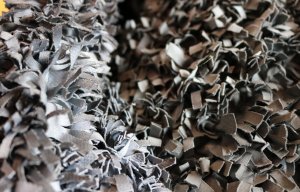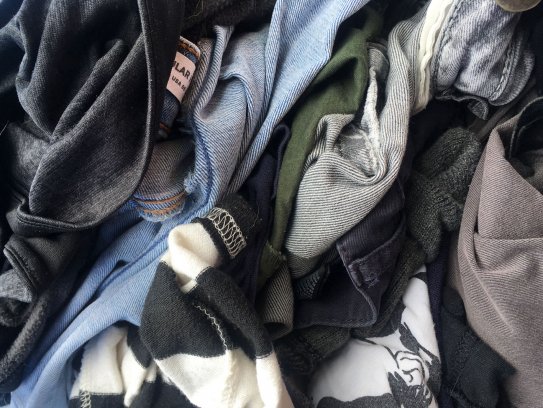
T-REX – latest EU recycling initiative
Almost half a million tons of textile waste readily available for fibre-to-fibre recycling in six European countries.

27th September 2022
Innovation in Textiles
|
Amsterdam
Fashion for Good has concluded its Sorting for Circularity Europe project, and in collaboration with Circle Economy has released a report detailing the findings of the 16-month analysis.
It indicates that 74% of low-value, post-consumer textiles – a total of 494,000 tons – are readily available for fibre-to-fibre recycling in six European countries. This represents the potential to generate an additional €74 million per year in value by reintroducing sorted and recycled textiles back into the value chain.
“As fibre-to-fibre textile recycling commitments and policies increase, as well as the amount of textile waste collected, the infrastructure required to drive the move towards circular systems requires significant investment to scale,” said Fashion for Good MD Katrin Ley. “To make informed investment decisions, as well as assess the business case for monetisation through recycling, a deeper understanding of the characteristics of today’s European post-consumer textiles landscape is needed. This project lays the knowledge foundation.”
Harmonisation
The aim of the project was to increase harmonisation between the sorting and recycling industry, stimulating a recycling market for unwanted textiles that can generate new revenue streams for sorters and unlock demand for recyclers and brands.
Conducted across Europe, in Belgium, Germany, the Netherlands, Poland, Spain and the United Kingdom, the report provides the most comprehensive and representative snapshot of textile waste composition in Europe to date. The results point to promising opportunities for recapturing value while diverting textiles from downcycling and incineration. The report also informs brands of the best circular design practises to adopt and advises textile collection agencies and organisations how to build the necessary infrastructure and better educate and engage consumers on proper sorting and disposal practices.
Using near infrared (NIR) technology to determine garment composition – traditionally a task performed manually – the project analysed a total of 21 tons of post-consumer garments. On-the-ground examinations were performed over two time periods, Autumn/Winter 2021 and Spring/Summer 2022, to account for seasonal changes in the types of garments entering sorting facilities.
Cotton was found to be the dominant fibre (42%), followed by a large presence of material blends (32%), almost half of which consisted of polycottons (12%). Based on three characteristics, material composition, presence of disruptors, such as zippers and buttons, and colour, 21% of the materials analysed are deemed suitable as feedstock for mechanical recycling, while 53% are suitable for chemical recycling. This presents a significant opportunity for circularity as currently only 2% of post consumer textiles are diverted to fibre-to-fibre recycling.
Resources
In addition to the report, two further industry resources, developed by Circle Economy, have been made available – Recycler’s Database, a database mapping textile recycler’s capabilities, illuminating crucial gaps between the sorting and recycling industry, and an open source Sorters Handbook to guide the sorting industry.
Building off the project, two open digital platforms, Reverse Resources and Refashion Recycle, to match textile waste from sorters with recyclers, have been identified as critical tools to further enable the connections needed to drive greater circularity in the years to come. Following an assessment of suitable digital platforms within and outside of the textile industry, Reverse Resources has 39 active recyclers and 32 active waste handlers/sorters on its platform, while Refashion Recycle has 103 recyclers and 66 sorters onboarded onto its platform. This represents a large portion of the European circularity industry.
Business case
The amount of textile waste collected is likely to increase, due to growing consumption and disposal, and incoming legislation, such as the EU’s Waste Framework Directive. Overall, a strong business case for sorting low value textiles is required in order to maintain and increase sorting capacity in Europe. To support this retention and development of sorting capacity, increased investments and policy changes will play a key role.
The Sorting for Circularity Europe project brought together the largest industrial textile sorters in the European region including the Boer Group, I:CO (Soex), JMP Wilcox, Modare-Cáritas, Wtórpol and Texaid,
It was made possible by catalytic funding from Laudes Foundation with support from brand partners, adidas, Bestseller, Inditex and Zalando and H&M Group as the key project partner. Arvind, Birla Cellulose, Levi Strauss, Otto Group and PVH Corporation also participated as part of the wider working group.
Terra led the creation and implementation of the methodology and Matoha provided the NIR technology used to assess textile waste composition.
The full report can be read here.

Business intelligence for the fibre, textiles and apparel industries: technologies, innovations, markets, investments, trade policy, sourcing, strategy...
Find out more